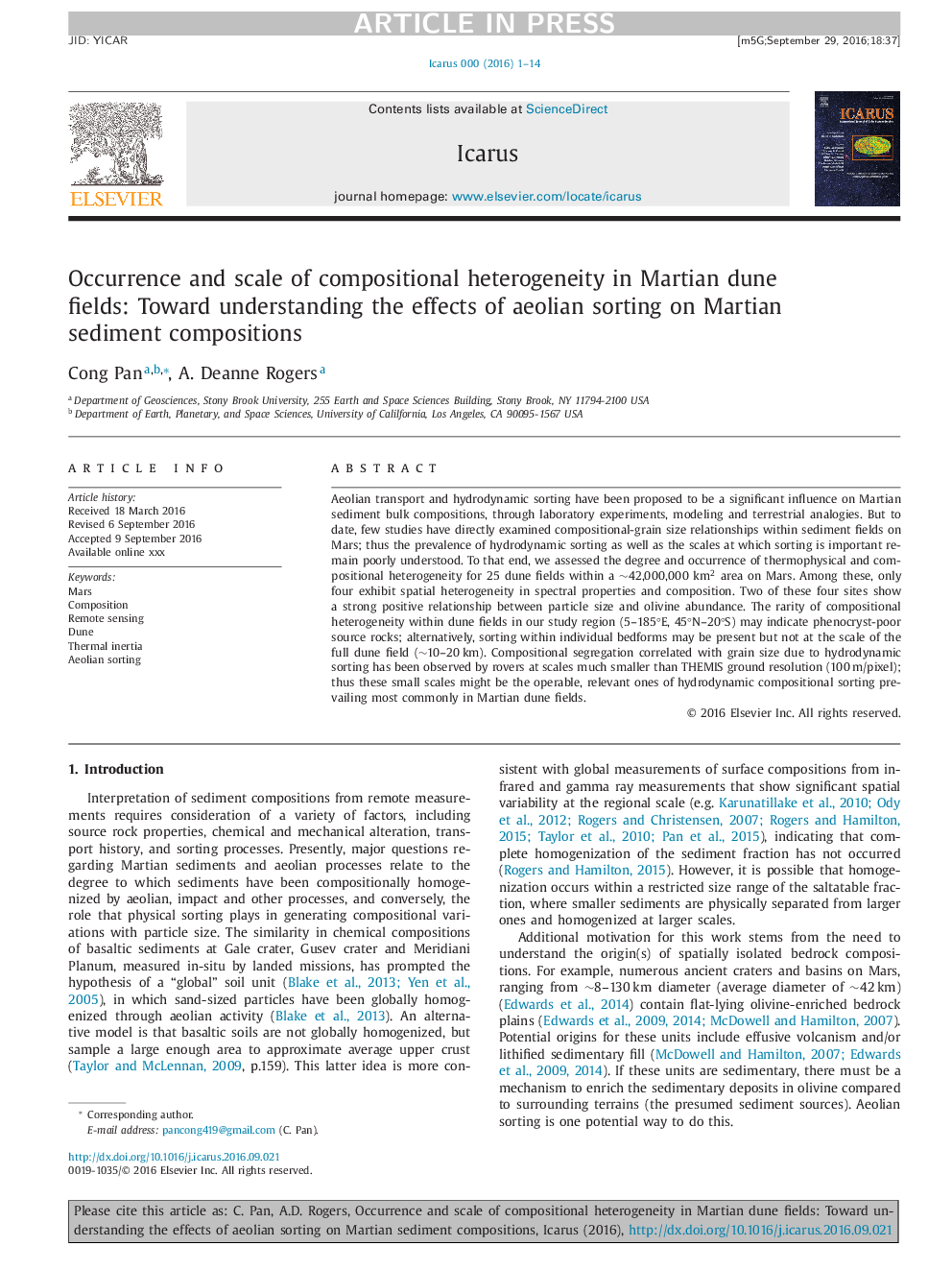| Article ID | Journal | Published Year | Pages | File Type |
|---|---|---|---|---|
| 5487403 | Icarus | 2017 | 14 Pages |
Abstract
Aeolian transport and hydrodynamic sorting have been proposed to be a significant influence on Martian sediment bulk compositions, through laboratory experiments, modeling and terrestrial analogies. But to date, few studies have directly examined compositional-grain size relationships within sediment fields on Mars; thus the prevalence of hydrodynamic sorting as well as the scales at which sorting is important remain poorly understood. To that end, we assessed the degree and occurrence of thermophysical and compositional heterogeneity for 25 dune fields within a â¼42,000,000 km2 area on Mars. Among these, only four exhibit spatial heterogeneity in spectral properties and composition. Two of these four sites show a strong positive relationship between particle size and olivine abundance. The rarity of compositional heterogeneity within dune fields in our study region (5-185°E, 45°N-20°S) may indicate phenocryst-poor source rocks; alternatively, sorting within individual bedforms may be present but not at the scale of the full dune field (â¼10-20 km). Compositional segregation correlated with grain size due to hydrodynamic sorting has been observed by rovers at scales much smaller than THEMIS ground resolution (100 m/pixel); thus these small scales might be the operable, relevant ones of hydrodynamic compositional sorting prevailing most commonly in Martian dune fields.
Related Topics
Physical Sciences and Engineering
Earth and Planetary Sciences
Space and Planetary Science
Authors
Cong Pan, A. Deanne Rogers,
